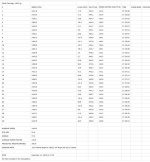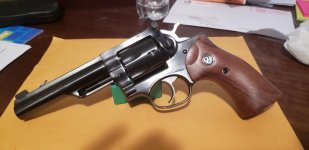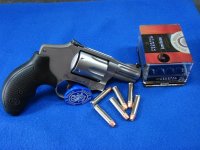Respectfully, the argument over the kinetic energy v momentum in terminal ballistics has raged for many decades.
It is not “kinetic energy” (the force required to accelerate a given mass to a given velocity) that “does damage in a flesh and bone target.” It is the bullet. This seems grossly simplistic, but it matters.
The bottom line, IMHO, is the oft-repeated phrase, “All handgun rounds suck.” Because they do.
Velocity matters. Bullet mass matters. But where that bullet goes matters much, much more than either.
I will never tell someone which caliber/cartridge they should use. I would, however caution that they probably shouldn’t use numbers on a page to make their choice.
Maybe it's military experience, or being old-school, but the point of velocity against two legged targets is, beyond a certain point, to increase the point blank range, create standoff, or in certain cases to penetrate barriers/armor.
I just don't see the gain at snubnose/house/dark alley distances, and no one has been able to definitely prove a gain to me. Big bores against wild animals are a different story --- now I kind of want 30-40 inches of penetration at close range.
Over and over again I read self and home defense stories where the good guy/gal had a .22...or an old .32 top-break...or a .38 Special with ancient LRN...or, yes, a 9mm. It's very rarely a common big bore and NEVER an enthusiast death ray cartridge like .50AE, 9x23, .460 Rowland, etc.. I admit that this is self-selecting as people in bad neighborhoods where most of the encounters take place don't have the funds for magazine cover handguns.
From an innovation standpoint, cramming the most cartridge into the lightest and smallest form factor is interesting, but the law of diminishing returns still holds.








